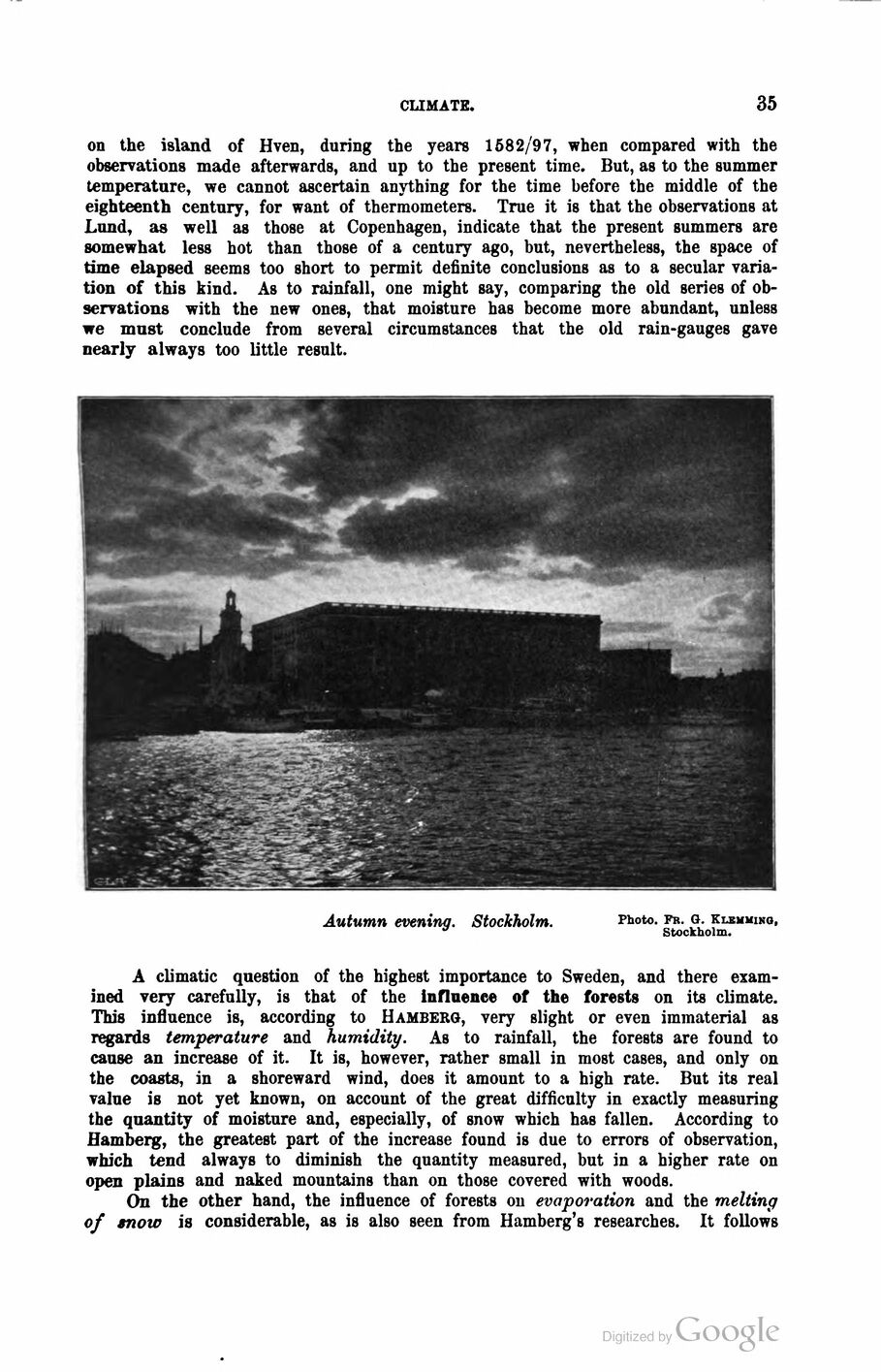
Full resolution (JPEG) - On this page / på denna sida - First part - I. Physical Geography - 2. Climate. By N. Ekholm, Ph. D., Central Meteorological Office, Stockholm

<< prev. page << föreg. sida << >> nästa sida >> next page >>
Below is the raw OCR text
from the above scanned image.
Do you see an error? Proofread the page now!
Här nedan syns maskintolkade texten från faksimilbilden ovan.
Ser du något fel? Korrekturläs sidan nu!
This page has never been proofread. / Denna sida har aldrig korrekturlästs.
CLIMATE.
35
on the island of Hven, during the years 1582/97, when compared with the
observations made afterwards, and up to the present time. But, as to the summer
temperature, we cannot ascertain anything for the time before the middle of the
eighteenth century, for want of thermometers. True it is that the observations at
Lund, as well as those at Copenhagen, indicate that the present summers are
somewhat less hot than those of a century ago, but, nevertheless, the space of
time elapsed seems too short to permit definite conclusions as to a secular
variation of this kind. As to rainfall, one might say, comparing the old series of
observations with the new ones, that moisture has become more abundant, unless
we must conclude from several circumstances that the old rain-gauges gave
nearly always too little result.
Autumn evening. Stockholm.
Photo. Fr. G. Klehuino,
Stockholm.
A climatic question of the highest importance to Sweden, and there
examined very carefully, is that of the inflnence of the forests on its climate.
This influence is, according to Hamberg, very slight or even immaterial as
regards temperature and humidity. As to rainfall, the forests are found to
cause an increase of it. It is, however, rather small in most cases, and only on
the coasts, in a shoreward wind, does it amount to a high rate. But its real
value is not yet known, on account of the great difficulty in exactly measuring
the quantity of moisture and, especially, of snow which has fallen. According to
Hamberg, the greatest part of the increase found is due to errors of observation,
which tend always to diminish the quantity measured, but in a higher rate on
open plains and naked mountains than on those covered with woods.
On the other hand, the influence of forests ou evaporation and the melting
of tnow is considerable, as is also seen from Hamberg’s researches. It follows
<< prev. page << föreg. sida << >> nästa sida >> next page >>